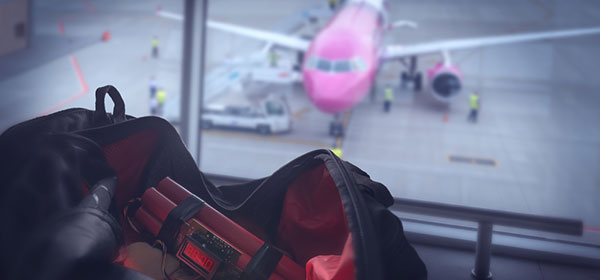It’s every traveller’s worst fear – a bomb found on a plane – and in the age of ‘the war on terror’ and the real or perceived threat of terrorism, it may be a far-fetched notion, but one for which airlines nonetheless have a contingency plan.
Many people may think that September 11, 2001 was the obvious catalyst for this line of thinking, but the truth is that every plane built since 1972 has a designated ‘Least Bomb Risk Location’ which the manufacturer has decided will be safest should an explosive device detonate on board.
It’s not public knowledge where these locations are exactly, and they quite possibly vary from plane to plane. The US Department of Transport says the spot would be somewhere a bomb could detonate and cause the least damage to critical systems and structures, and where it would significantly decrease the effects of an explosion.
According to a report in The Sun, an anonymous pilot said it’s often next to one of the rear cabin doors.
The pilot also told The Sun: “If an explosive device is found and can be carried, it will be moved to that spot and covered with materials or furnishings [like suitcases or ripped-up chairs] that would help mitigate any blast effects.”
Supposedly, smothering the bomb would force the explosion outwards, rather than in towards passengers.
“The pilots would also descend the aircraft and depressurise the cabin, most likely,” the pilot added.
“The device would not be intentionally detonated [though].
“The idea would be to land and evacuate the passengers as quickly as possible.”
While it’s potentially worrying for anyone booking a flight with only rear seats available, it’s comforting to think that there’s a plan for the worst possible scenario in the sky.
Were you aware of the Least Bomb Risk Location? Will it prevent you from taking a back seat?
Related articles:
Where to sit for VIP service
Beware of thieves on planes
Which are the worst passengers?

